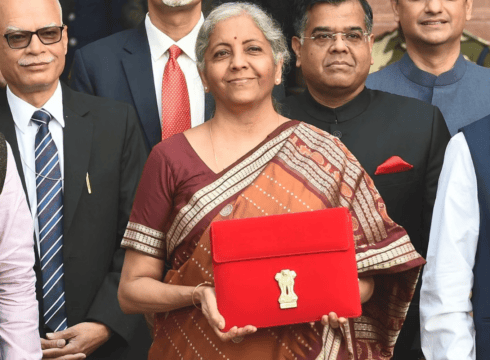From an outlay of INR 2,137 Cr in the last budget, the government has cut down the allocation for fintechs and banks to INR 1,500 Cr
The Payment Council of India had asked for a total MDR support of INR 8,000 Cr, with INR 6,000 Cr for UPI transactions
While UPI transactions are free for merchants and customers, fintech startups, payment gateways and banks have to bear the costs
Inc42 Daily Brief
Stay Ahead With Daily News & Analysis on India’s Tech & Startup Economy
The government has cut down the subsidy meant for compensating fintech startups and banks that facilitate UPI transactions in its Union Budget 2023-24 announcements.
From an outlay of INR 2,137 Cr in the last budget, the government has cut down the incentive allocation for fintechs and banks to INR 1,500 Cr, a reduction of nearly 30%.
Incidentally, during the 2021-22 budget, the government had only set aside INR 200 Cr to compensate UPI players as a subsidy. However, industry stakeholders, including the Reserve Bank of India (RBI), said the move might prove detrimental to the growth of UPI. As such, the government ended up bumping the outlay of the incentive scheme by more than 10X in the 2022-23 budget.
On the other hand, the Payment Council of India had asked for a total MDR support of INR 8,000 Cr – INR 6,000 Cr for UPI transactions and the rest for RuPay debit cards.
The fintech startups need incentives to sustain their operations; since UPI does not have any merchant discount rate (MDR), the players shoulder the costs of operating the infrastructure that enables UPI transactions.
MDR is a small fee charged by banks and fintech players to merchants for processing payments on digital wallets and debit and credit cards. In other words, for each digital transaction, the merchant pays a certain percentage of the amount, from which the banks and payment service providers take their shares.
This fee is generally less than 2% and allows fintech startups and payment gateways to operate sustainably. While a zero MDR policy has helped the idea of digital payments increase in the country, the UPI ecosystem in India is nearing maturity.
Soon, the government might have to make a call, though the idea is set to be unpopular.
The idea of charging MDR on UPI transactions recently resurfaced after the RBI floated a discussion paper on “Charges in Payment Systems” in August last year, as a litmus test on the public opinion for charges on UPI. The RBI said that either the cost gets passed on to the merchant as MDR or the customer as transaction fees.
The pushback, however, was so severe that the Finance Ministry had to clarify the situation on Twitter, stating that the government has no plans to deploy MDR on UPI transactions.
In January this year, the government also announced a separate INR 2,600 Cr scheme to incentivise fintech startups and banks for enabling small-value UPI and RuPay-BHIM transactions.
The scheme is set to incentivise digital payments enablers on facilitating payments under INR 2,000 for FY23. The industry is awaiting more clarity on the scheme, for now.
{{#name}}{{name}}{{/name}}{{^name}}-{{/name}}
{{#description}}{{description}}...{{/description}}{{^description}}-{{/description}}
Note: We at Inc42 take our ethics very seriously. More information about it can be found here.


